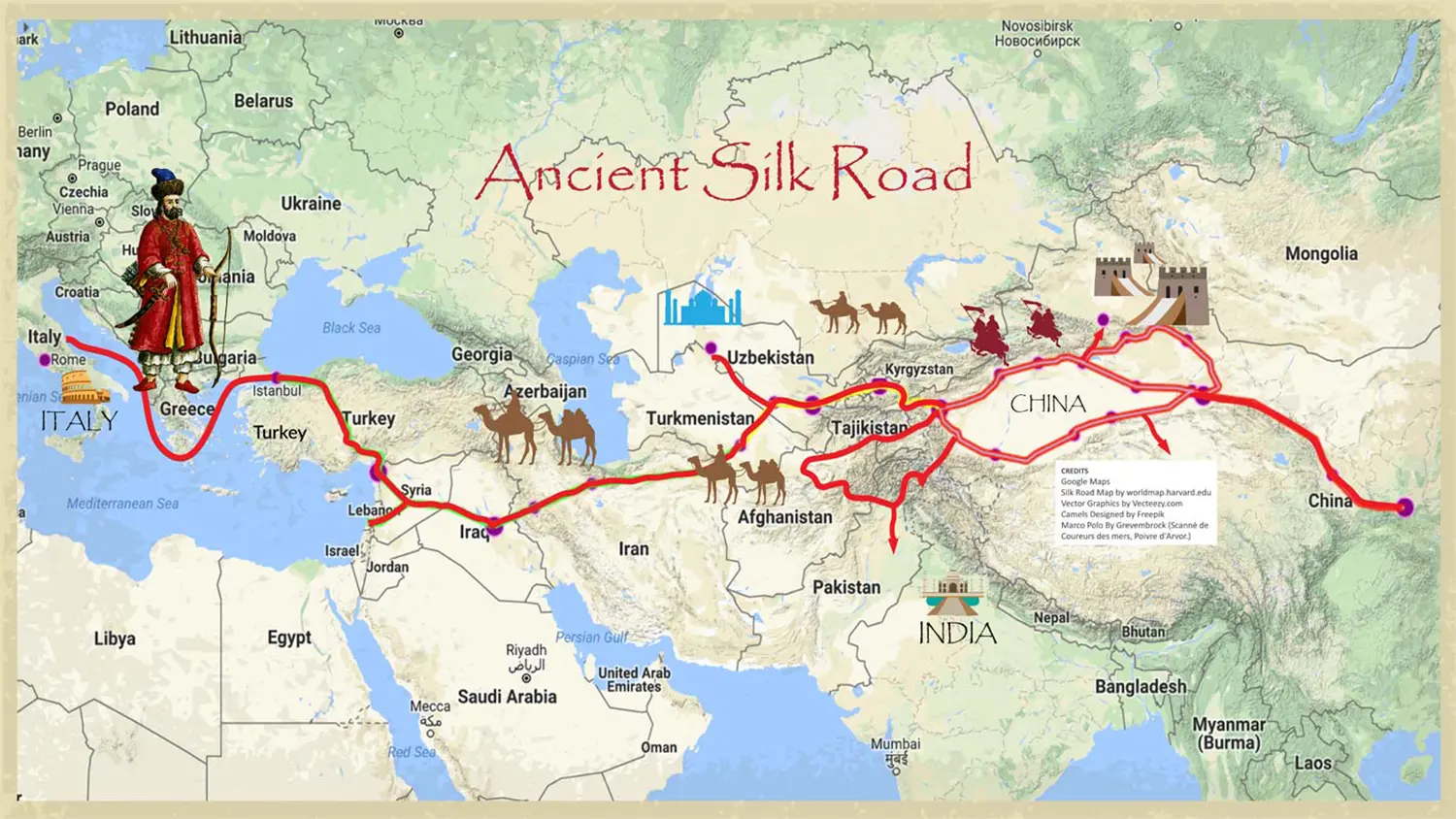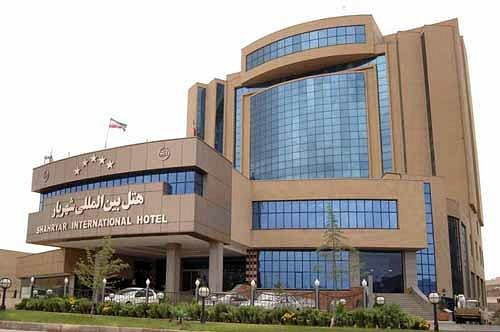Tabriz, located in the northwestern region of Iran, offers a captivating blend of history, culture, and industry. Situated in the Quru River valley amid the Sahand and Eynali mountains, Tabriz’s elevation ranges from 1,350 to 1,600 meters above sea level, providing visitors with stunning natural vistas.
Recognized globally for its cultural significance, Tabriz holds prestigious titles such as the World Carpet Weaving City by the World Crafts Council in October 2015 and the Exemplary Tourist City of 2018 by the Organisation of Islamic Cooperation. Moreover, the city is renowned for handicrafts, particularly hand-woven rugs, exquisite jewelry, and delectable confectionery.
Throughout Tabriz, traces of its rich history are evident in the numerous historical monuments dating back to the Ilkhanid, Safavid, and Qajar periods. The city’s name, Tabriz, is believed to originate from its abundance of thermal springs.
Whether drawn to its cultural treasures, culinary delights, or architectural wonders, Tabriz promises an enriching experience showcasing the best of Iran’s northwest.
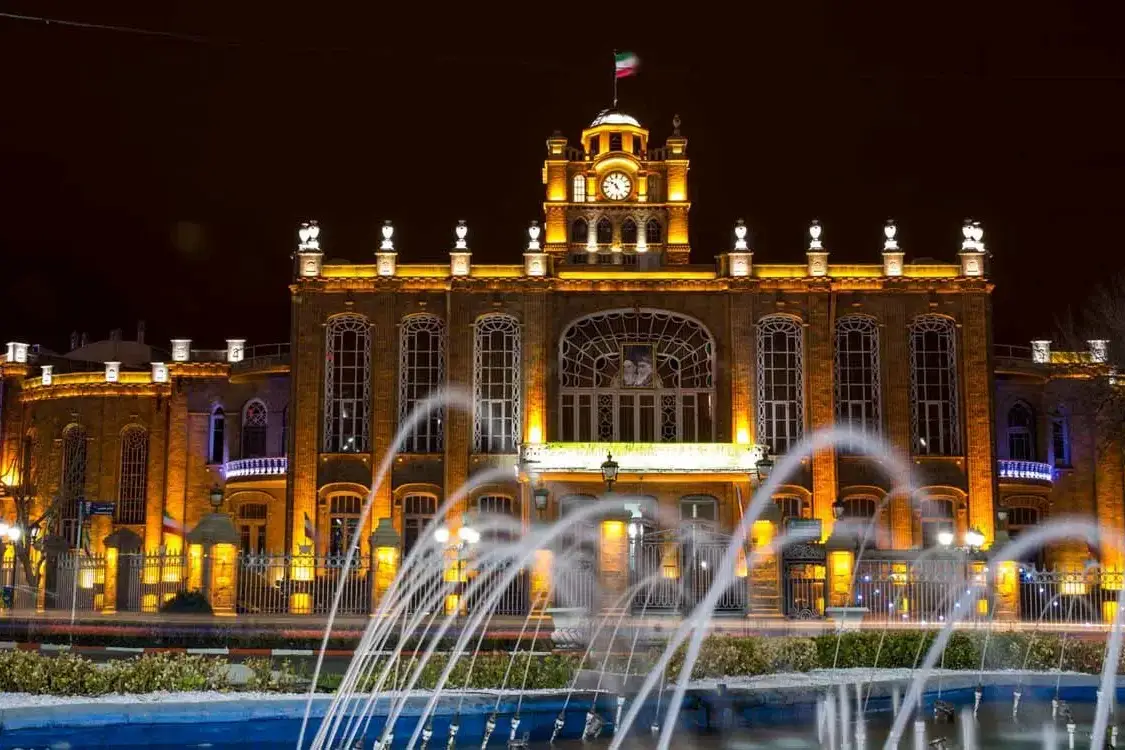
Ready to immerse yourself in Iran’s rich culture and history? Join us on a captivating Yazd tour and unlock the secrets of this vibrant city! Explore ancient sites, try delicious cuisine, and experience the warmth of Persian hospitality. Book your Iran tour package now and plan an unforgettable journey!
Tabriz Grand Bazaar
Located in the heart of Tabriz lies the captivating Grand Bazaar, a busy marketplace steeped in history. As one of the world’s oldest and largest covered bazaars, it exudes an air of ancient charm. Its intricate architecture, comprised of interconnected brick structures and enclosed spaces, reflects centuries of commercial and cultural exchange.
Here, amidst the maze-like alleyways, you’ll discover a variety of 40 occupations, each contributing to the bustling atmosphere. From hand-woven rugs to intricate jewelry, the bazaar offers various goods, echoing its prosperous past as a pivotal trading hub along the Silk Road. With its recent recognition as a UNESCO World Heritage Site and the Aga Khan Award for Architecture recipient, the Grand Bazaar represents Tabriz’s enduring legacy as a center of commerce and culture.
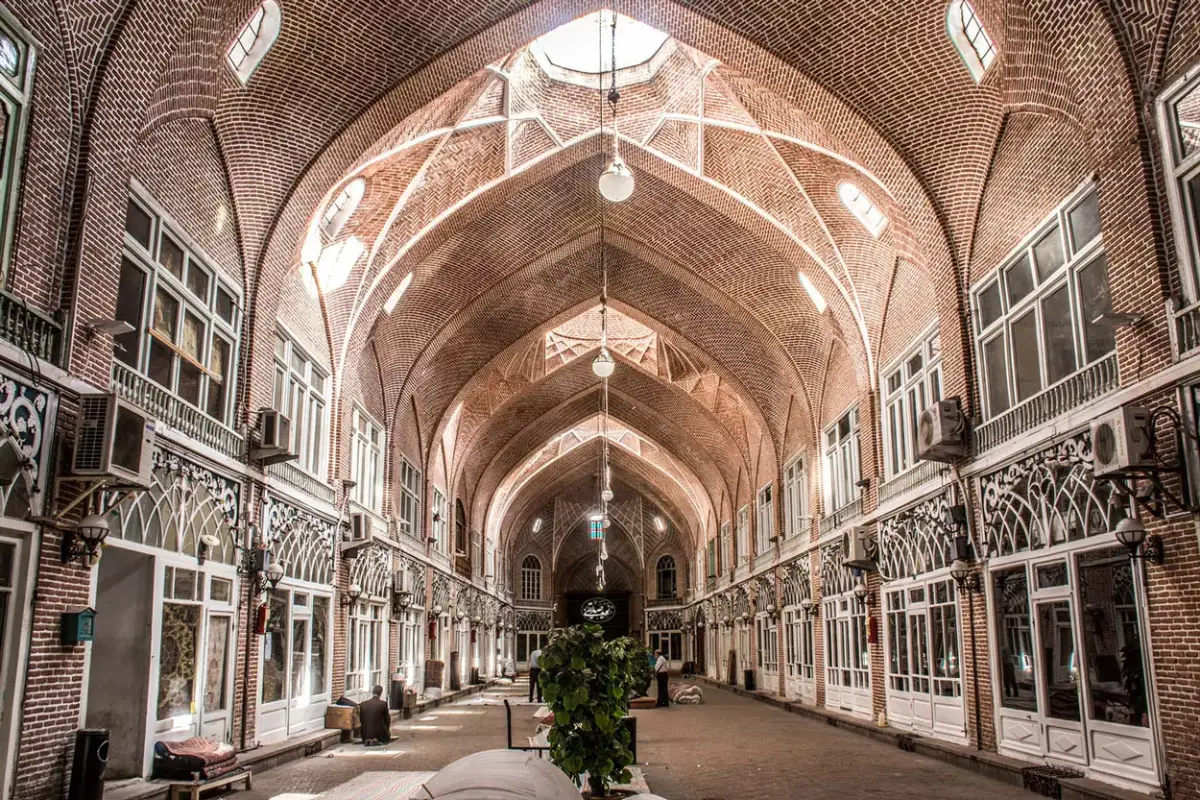
Constitution House of Tabriz
Step back in time at the Constitution House of Tabriz, a historic landmark pivotal in Iran’s constitutional revolution. This two-story building was constructed in 1868 by Haj Mehdi Koozeh Kanani and was a gathering place for revolutionary leaders, activists, and sympathizers. Discussions and debates shaped history within its walls as figures like Sattar Khan and Baqer Khan strategized for change.
Today, visitors can explore the museum housed within the building, showcasing sculptures, artifacts, and personal belongings of the revolutionaries. Each exhibit offers a glimpse into a transformative period in Iran’s history, from underground newspapers to printing presses. With its rich heritage and architectural splendor, the Constitution House of Tabriz is a reminder of the power of unity and perseverance in pursuing freedom.
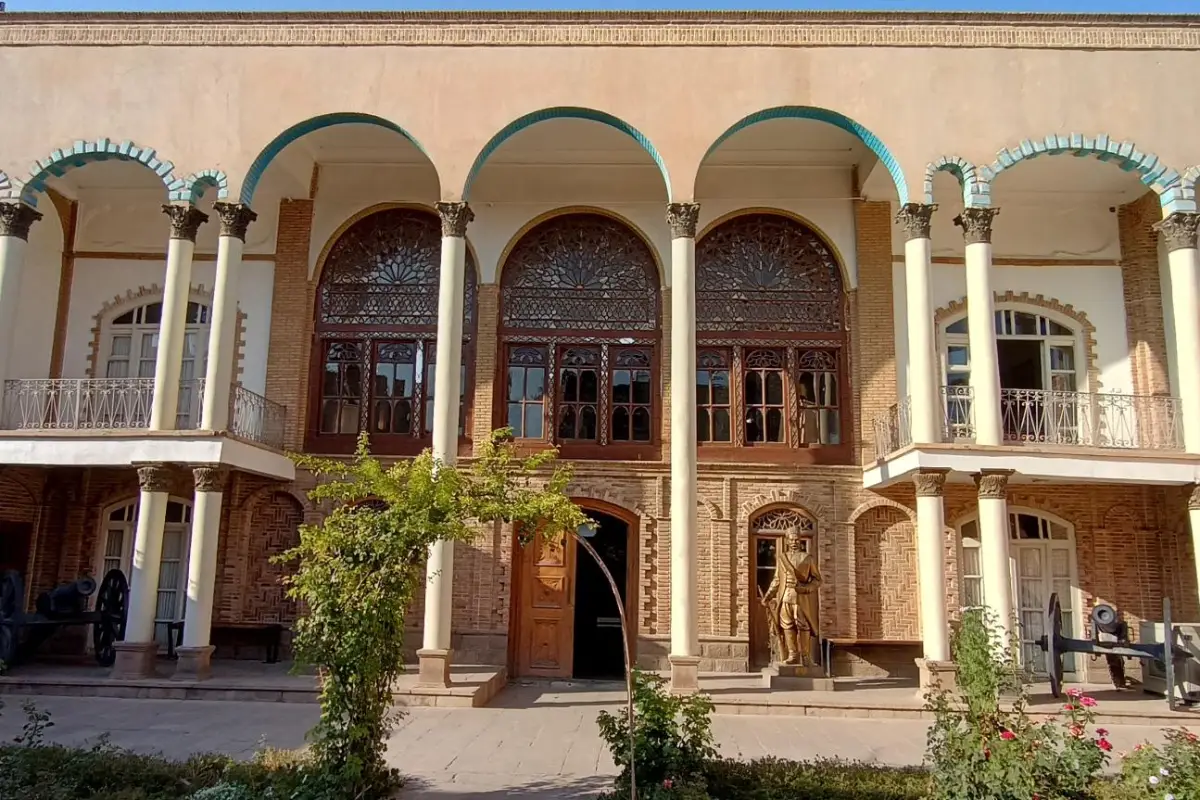
Saint Mary Church of Tabriz
Tucked away in the historic Dik Bashi neighborhood, the Saint Mary Church represents Tabriz’s diverse cultural heritage. Built in 1785, this Armenian Apostolic church is the largest and oldest Christian church in the city. Its elegant facade and sprawling annex buildings command attention, drawing visitors into a world of religious reverence and architectural marvel.
Centuries of history unfold within its walls, from the mention of the church by Marco Polo to its reconstruction after a devastating earthquake in 1780. As you wander through its halls adorned with biblical paintings and stone arches, you’ll witness the enduring legacy of faith and tradition in Tabriz. For the Armenian community, the Saint Mary Church remains a cherished center for national and religious ceremonies, preserving its cultural significance for generations to come.
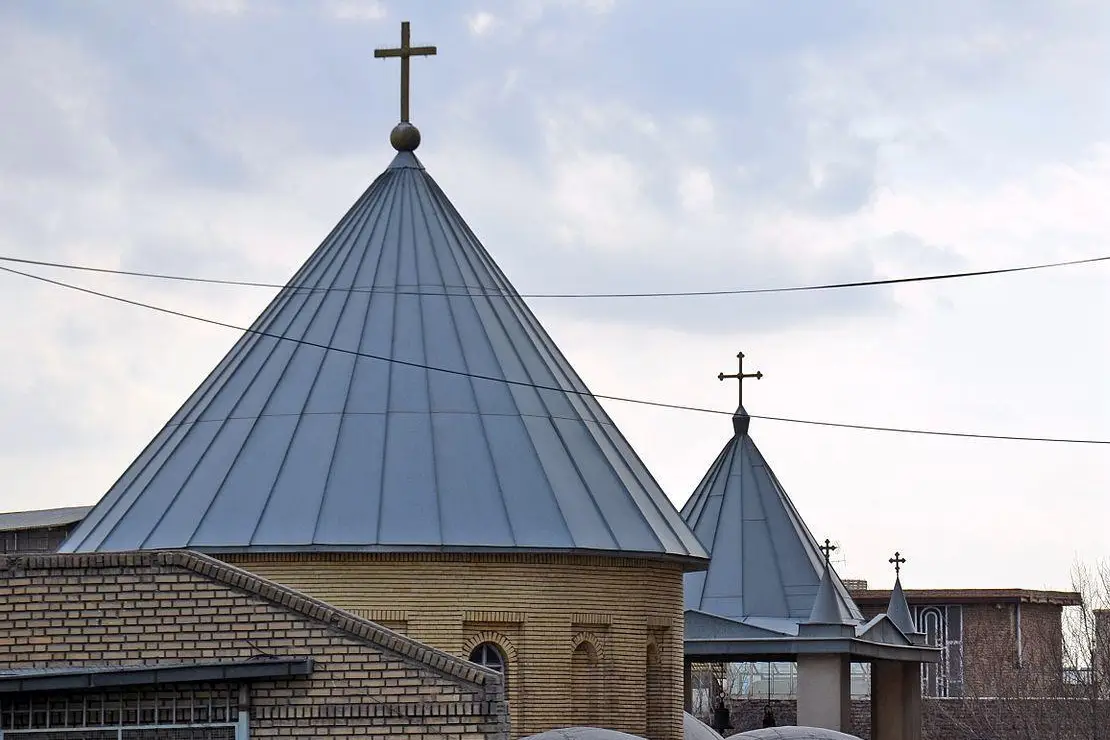
Tabriz Municipality Palace
Standing tall in the bustling Clock Square, the Tabriz Municipality Palace, also known as Sa’at Tower, commands attention with its imposing presence. Built in 1933 under German supervision, this stately edifice is the municipal government’s city hall and main office. Its architecture, reminiscent of a soaring eagle, blends historical grandeur and modern functionality.
The Municipal Museum offers a glimpse into Tabriz’s past, with exhibits showcasing historical maps, photographs, and artifacts. Each display tells a story of the city’s evolution from early vehicles to Tabriz rugs. Beyond its role as a government center, the palace symbolizes civic pride, hosting ceremonies and gatherings that bring the community together. As you explore its corridors and climb the tower’s clock, you’ll discover a city that embraces its heritage while embracing the future with open arms.
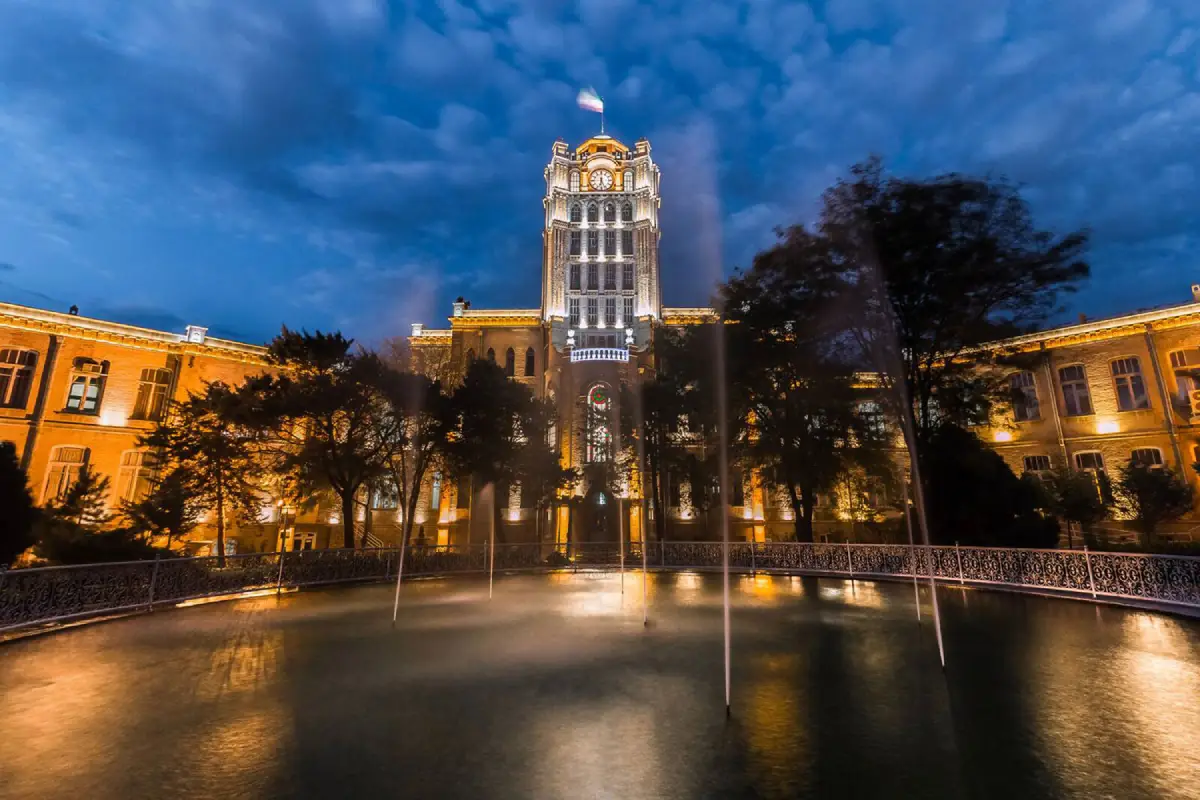
Azerbaijan Museum
The Azerbaijan Museum showcases history and culture in the heart of Tabriz. Established in April 1958, it holds the prestigious title of being the first and oldest museum in the northwestern region of Iran. As you step inside, you’ll be transported through time, exploring artifacts and artworks that span millennia. With three expansive galleries, the museum offers a comprehensive journey through Iran’s rich archaeological heritage.
From relics dating back to the 5th millennium BC to sculptures crafted by Ahad Hosseini, the exhibits showcase the diverse tapestry of Iranian history. The museum’s library boasts over 2500 books, with topics ranging from history and archaeology to art and culture. Despite facing challenges like the theft of precious artifacts in 2013, the Azerbaijan Museum remains a bastion of Iran’s cultural legacy, welcoming over 100,000 visitors annually.
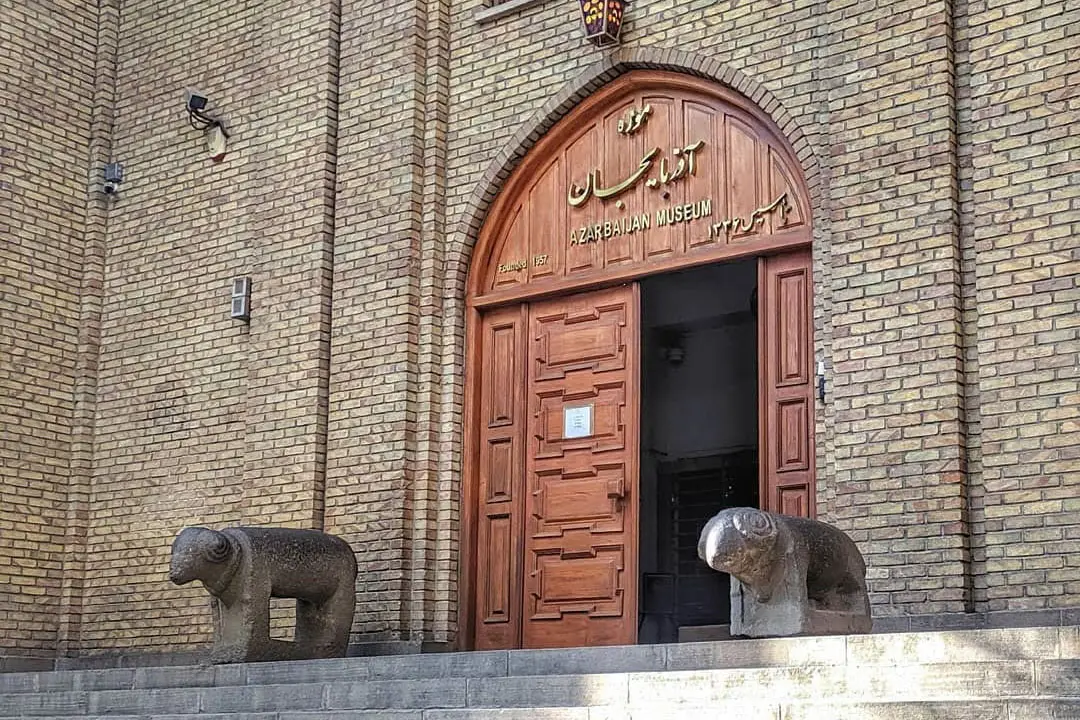
Eil Goli (Shahgoli) Park
Eil Goli Park, also known as Shah Goli, captivates visitors with its serene beauty and rich history. Situated in the southeast region of Tabriz, this historic park boasts a sprawling artificial lake spanning approximately 55,000 square meters. Steeped in tradition, the park’s origins are traced back to the late 18th century, though some sources suggest an even earlier inception in the 14th century. The park has undergone restoration efforts throughout its storied past, including adding high terraces during the Qajar period.
As you stroll along the park’s northern side, you’ll be greeted by the sight of the lake seemingly floating over the valley, a testament to its architectural ingenuity. A causeway leads to a charming pavilion, now home to a restaurant, offering a picturesque setting for a leisurely meal. Flanked by poplar trees and willows, the park exudes tranquility, providing a welcome escape from the hustle and bustle of city life.
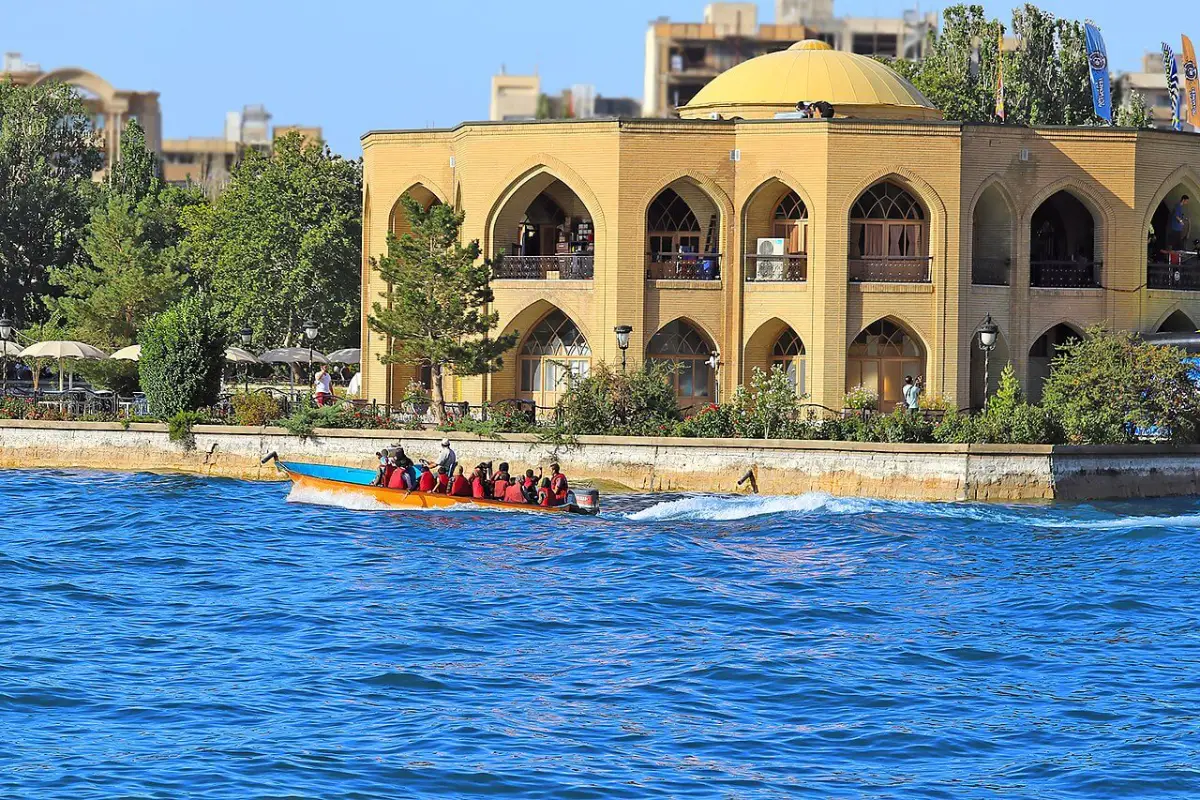
Kabood Mosque
Step into history at the Blue Mosque, an iconic landmark that embodies the essence of Tabriz’s architectural heritage. Dating back to the Qara Qoyunlu dynasty, the mosque’s construction commenced in the mid-14th century and culminated in 1465 under the Aq Qoyunlu rule. Renowned for its intricate tilework and distinctive blue-and-white patterns, the mosque is a testament to Turkmen’s architectural prowess.
Despite enduring the ravages of time and natural calamities, including a devastating earthquake in 1780, the mosque continues to captivate visitors with its awe-inspiring beauty. You’ll be transported to a bygone era of artistic splendor as you explore its vaulted corridors and main hall, adorned with dark-blue hexagonal tiles and stenciled gilding. The mosque’s architectural brilliance has left an indelible mark on Tabriz’s skyline, inspiring awe and admiration for future generations.
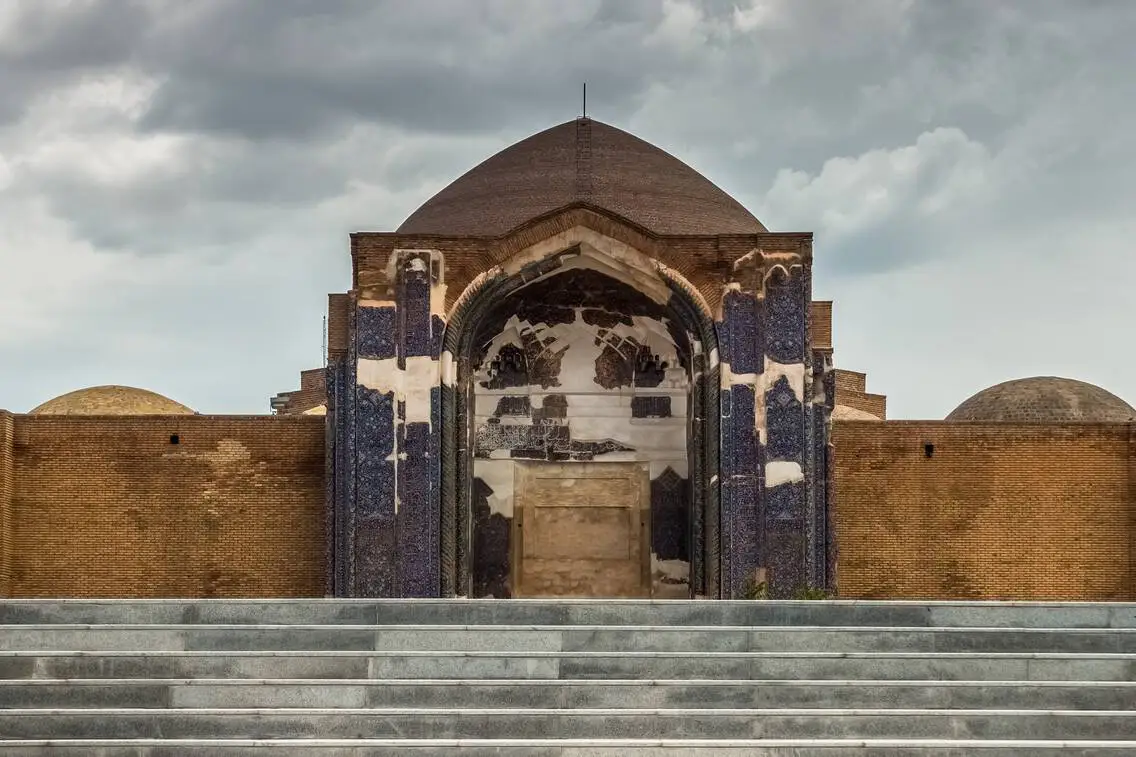
Maqbarat-o-Shoara (Mausoleum of Poets)
Located in the Surkhab district of Tabriz, the Mausoleum of Poets is a hallowed resting place for literary luminaries and distinguished figures. With over 400 tombs dating back 800 years, this sacred site serves as a poignant reminder of Iran’s rich cultural legacy. Poets, mystics, and notable personalities find eternal repose within its tranquil confines, including luminaries like Khaqani Shirvani and Mohammad-Hossein Shahriyar.
Since the 1970s, efforts have been underway to restore and renovate the graveyard area, preserving its cultural significance for future generations. Designed by architect Gholamreza Farzan, the mausoleum’s stunning architecture and serene ambiance offer a fitting tribute to the poets and scholars interred within. Surrounded by lush gardens and adorned with intricate stone sculptures, the mausoleum exudes an aura of reverence and contemplation, awaiting visitors to pay homage to the literary giants of Iran’s past.
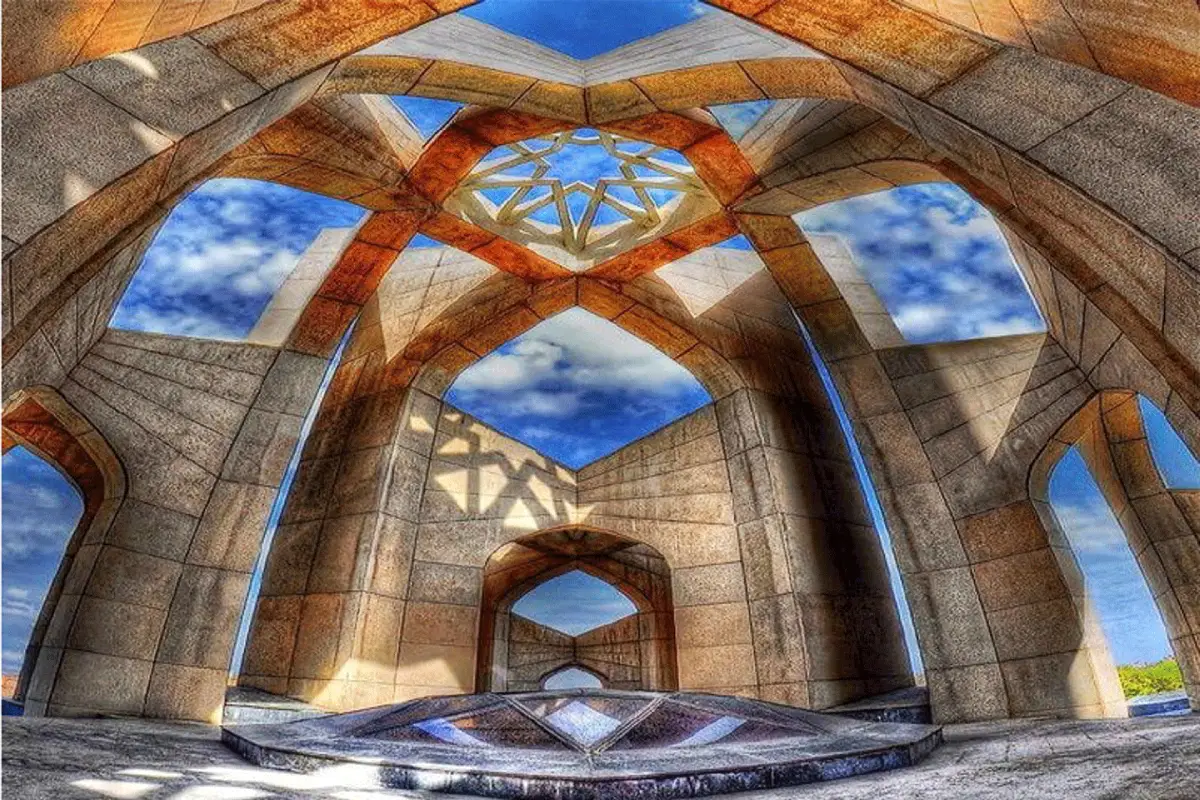
Qajar Museum of Tabriz
The Amir Nezam House, known as the Qajar Museum of Tabriz, represents Tabriz’s rich historical tapestry. Built during the reign of Crown Prince Abbas Mirza in the 19th century, this architectural gem has undergone extensive renovation to preserve its legacy. Today, visitors can explore its two stories spread across 3,000 square meters, adorned with two courtyards featuring charming gardens and ponds.
The house’s historical significance is further enhanced by its association with Hasan-Ali Khan, a notable figure remembered for his mastery of Persian prose. Inside the museum, you can delve into the opulent lifestyle of the Qajar dynasty through a collection of artifacts, including furniture, clothing, and artworks, offering a glimpse into the lavish court life of bygone eras.
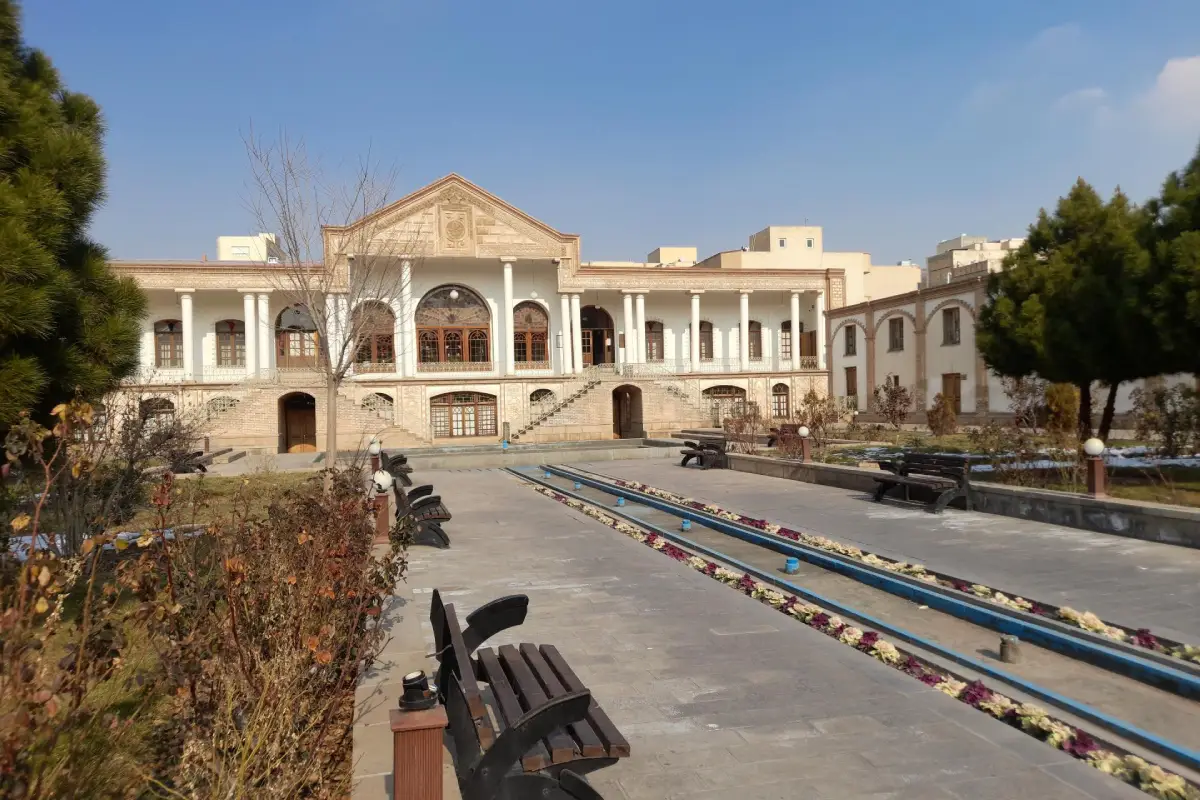
Kandovan Village
Kandovan Village, nestled in the Sahand Rural District, presents a unique blend of nature and human ingenuity. Carved into volcanic rocks, these troglodyte homes, locally known as Karaans, offer a glimpse into ancient architectural marvels reminiscent of Turkey’s Cappadocia region. Dating back to the 7th century AH, or even the pre-Islamic era, these dwellings captivate visitors with their cone-shaped cliffs and intricate interiors.
Beyond its architectural allure, Kandovan Village provides a retreat from the extremes of weather, offering a haven for its residents throughout the seasons. You can immerse yourself in the local culture by exploring the narrow alleyways, visiting traditional workshops, and savoring authentic Azerbaijani cuisine in local eateries.
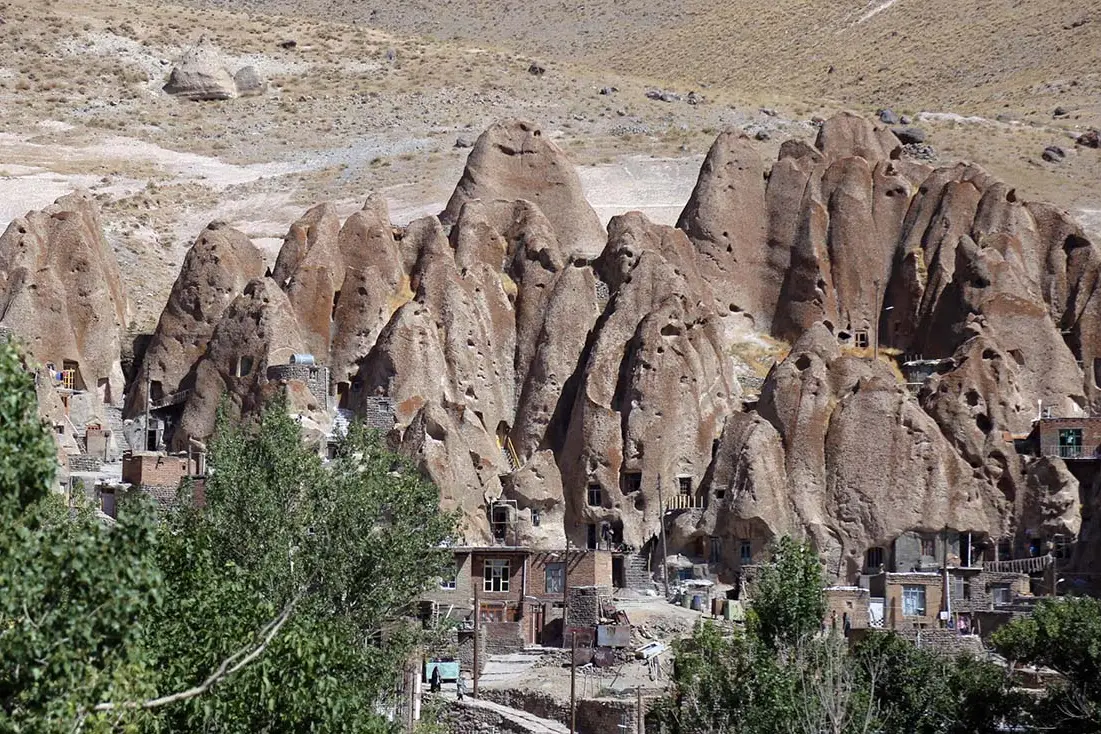
Imamzadeh Einali Zeinali
Imamzadeh Einali Zeinali, perched atop Zaynal Mountain, showcases Tabriz’s religious heritage. Believed to be the resting place of two sons of Hazrat Ali, this mausoleum exudes an aura of spirituality and reverence. Its Ilkhanate-era architecture hints at a storied past, with some historians tracing its origins to a Zoroastrian temple. Today, visitors flock to Einali Zeinali, drawn not only by its historical significance but also by the scenic beauty of Eynali Mountain.
Amidst its tranquil surroundings, the mausoleum offers solace and contemplation for pilgrims and tourists alike. The nearby Memorial Tower of the Anonymous Martyr adds to the site’s cultural significance, featuring Azari-style architecture adorned with the poetry of Mohammad-Hossein Shahriar, a celebrated Iranian poet.
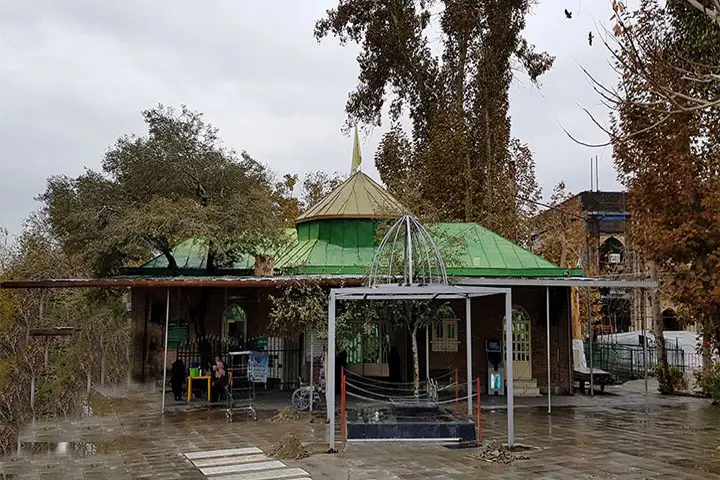
Sahand Mountain
Sahand Mountain, towering over East Azerbaijan Province, is a geological marvel steeped in natural beauty. At 3,707 meters, it reigns as the highest peak in the region, attracting adventurers and nature enthusiasts from far and wide. Dotted with lush vegetation and pristine meadows, Sahand earns its title as the “bride of Iran’s mountains.” Its slopes, adorned with colorful flora like corn roses and buttercups, create a picturesque landscape that mesmerizes visitors.
For thrill-seekers, Sahand Ski Resort offers an adrenaline-pumping experience amidst the snowy slopes, making it a must-visit destination for those seeking adventure in Iran’s northwest. Whether hiking along its scenic trails or carving through its powdery snow, Sahand Mountain promises an unforgettable experience for all who venture to its majestic heights.
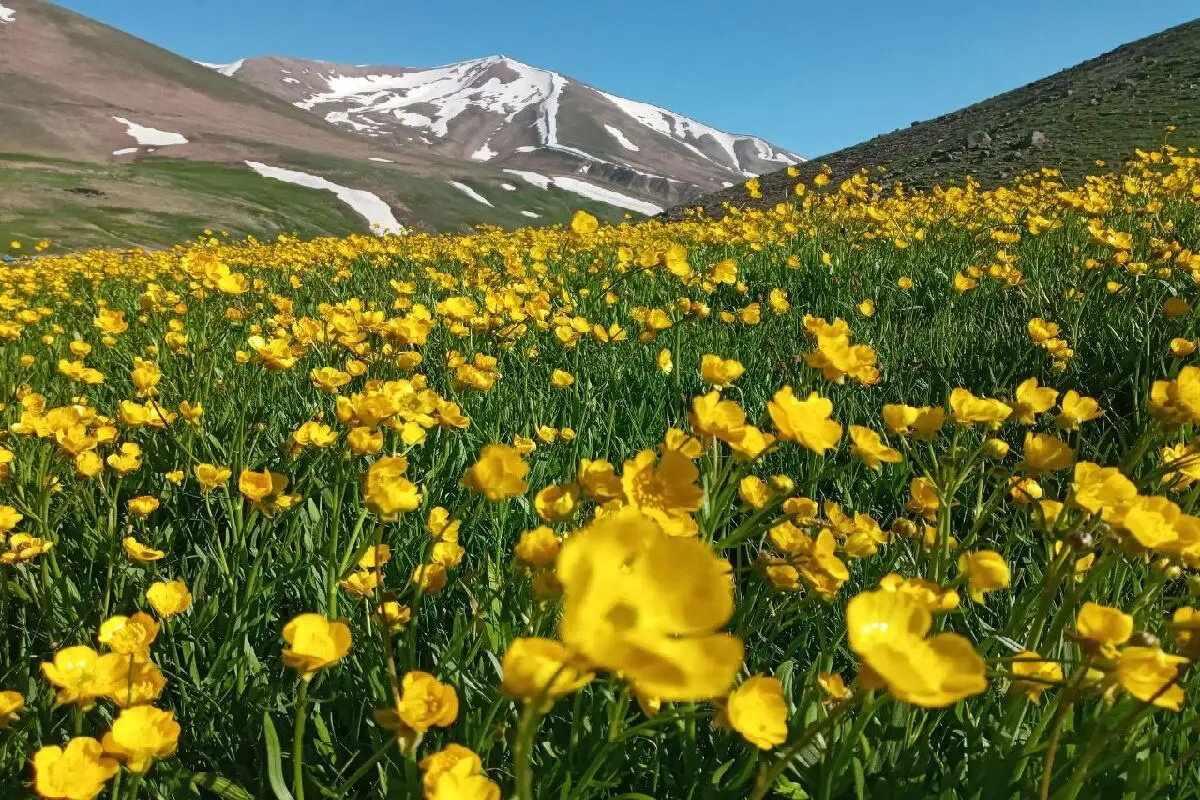
Jameh Mosque of Tabriz
The Jameh Mosque of Tabriz, situated in the bustling Bazaar suburb, is a timeless symbol of Tabriz’s religious and architectural heritage. Its expansive roofed area, adorned with delicate plasterwork dating back to the 5th century, is a testament to centuries of worship and community gatherings. The mosque has undergone numerous renovations throughout its history, including additions by the Mongol Ilkhanid Dynasty, leaving behind architectural marvels like its towering tiled dome.
Today, visitors marvel at the mosque’s solid structure and exquisite design and appreciate the skill of its architects and artisans. The oldest section, a large Shabestan featuring elegant brick pillars, offers a glimpse into Tabriz’s rich history and cultural legacy.
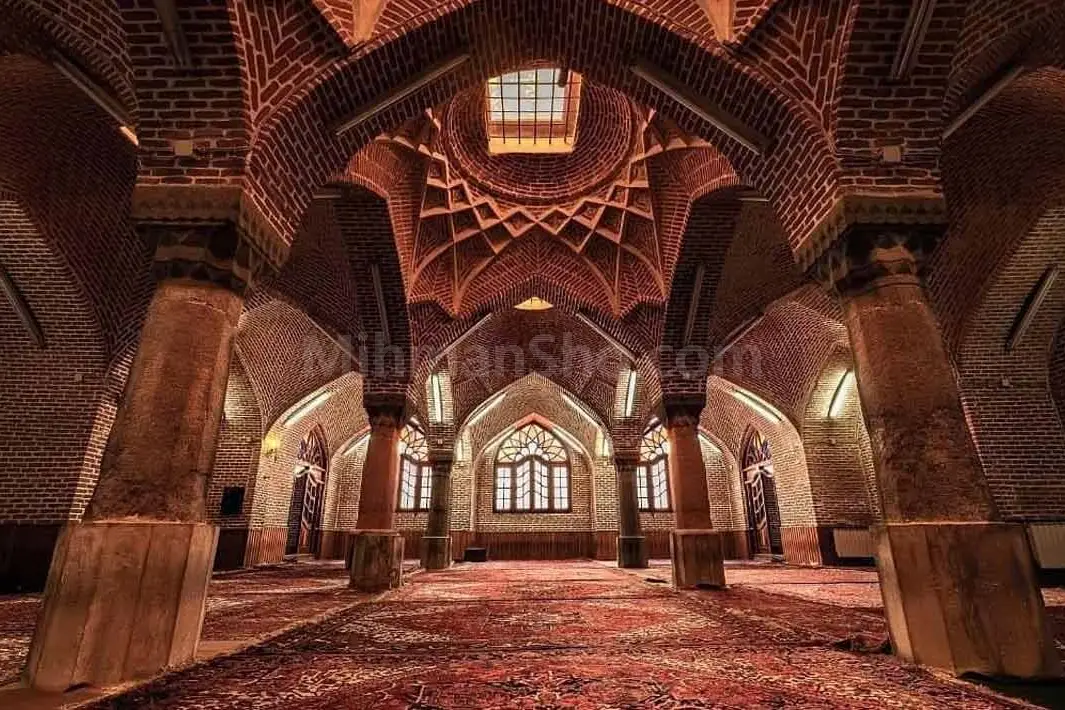
Liqvan Village
Liqvan Village, nestled in the picturesque Sahand Mountains, invites visitors to immerse themselves in the tranquility of rural life. With the Liqvan River meandering through its lush valley, the village exudes natural beauty and serenity. Greenery and orchards come to life in the summer, drawing visitors seeking respite from the heat.
The village is a haven for agriculture, dairy, and gardening, with its traditional feta cheese earning renown throughout Iran. Along the banks of the Liqvan River, leisure spots abound, offering a perfect setting for relaxation and reflection amidst nature’s splendor.
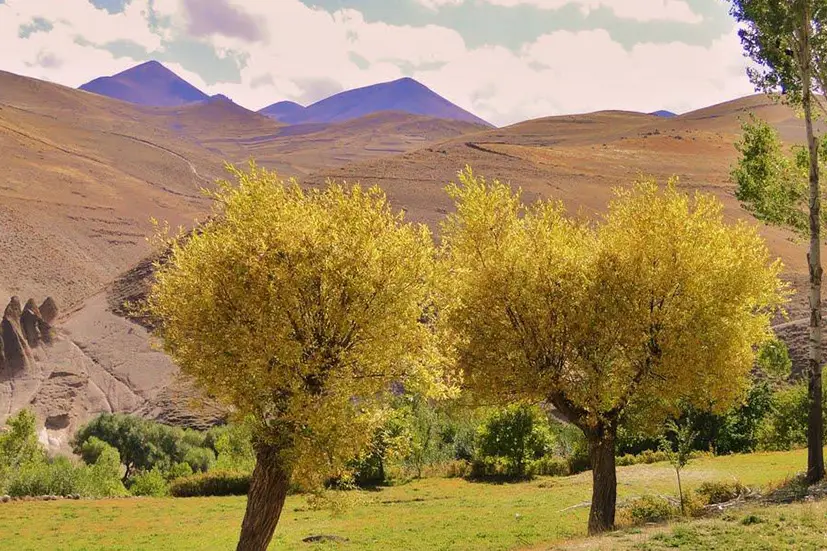
St. Sarkis Church
St. Sarkis Church, nestled in the Baron Avak neighborhood, represents Tabriz’s multicultural fabric and religious diversity. Built in 1845 with funding from the Petrossian family, the church showcases Armenian Apostolic architecture, characterized by its stone construction and brick dome.
The church’s courtyard, nestled within the Tamarian Armenian school building, serves as a spiritual and educational hub for the local Armenian community. Outside the church, a monument pays tribute to fallen Armenians, underscoring the church’s significance as a symbol of remembrance and resilience.
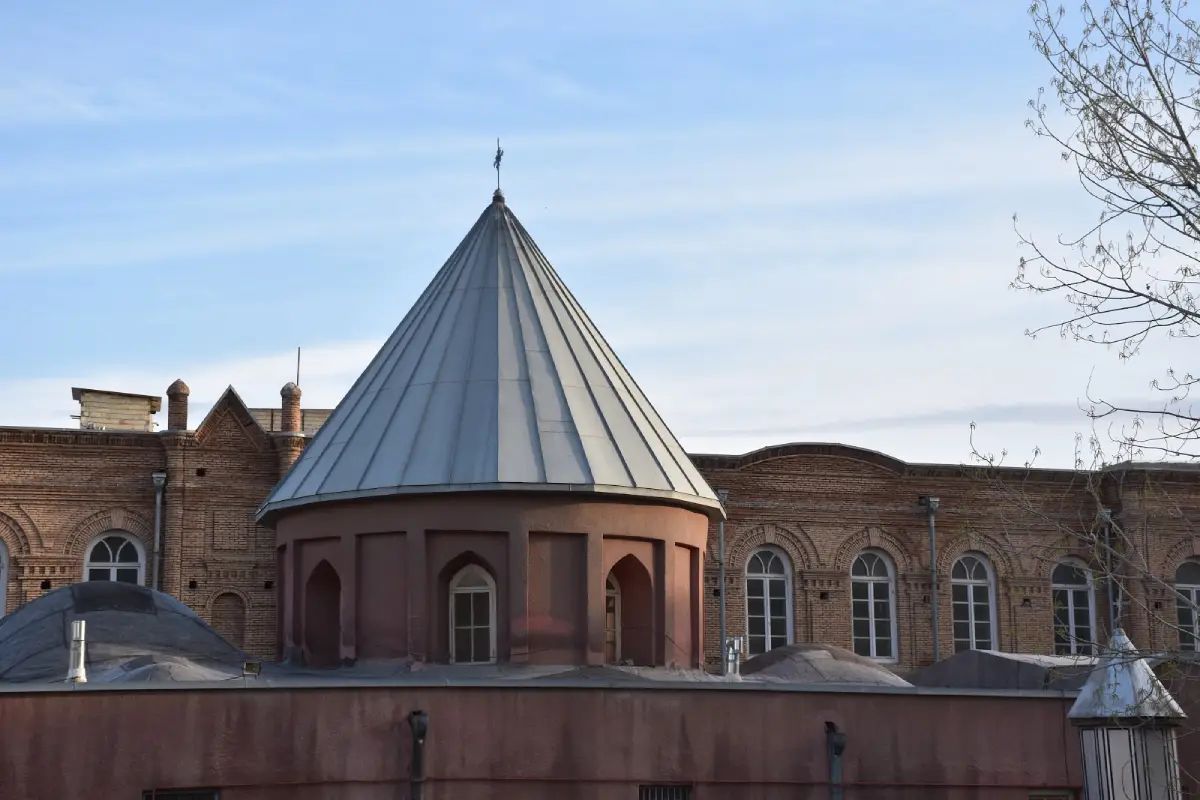
Eskandar Cave
Eskandar Cave, located just 30 kilometers from Tabriz in the village of Saeed Abad, beckons adventurers and nature enthusiasts alike. Accessible from the Tabriz-Tehran road, this natural wonder has remarkable stalactites adorning its inner walls.
While only two of its seven halls are accessible due to fallen stones, the cave’s opening, approximately five meters wide, offers a glimpse into its mysterious depths. Saeedabad Village, home to Eskandar Cave, is replete with tourist attractions, including the scenic Saeedabad Valley, making it a must-visit destination for those exploring Tabriz’s natural wonders.
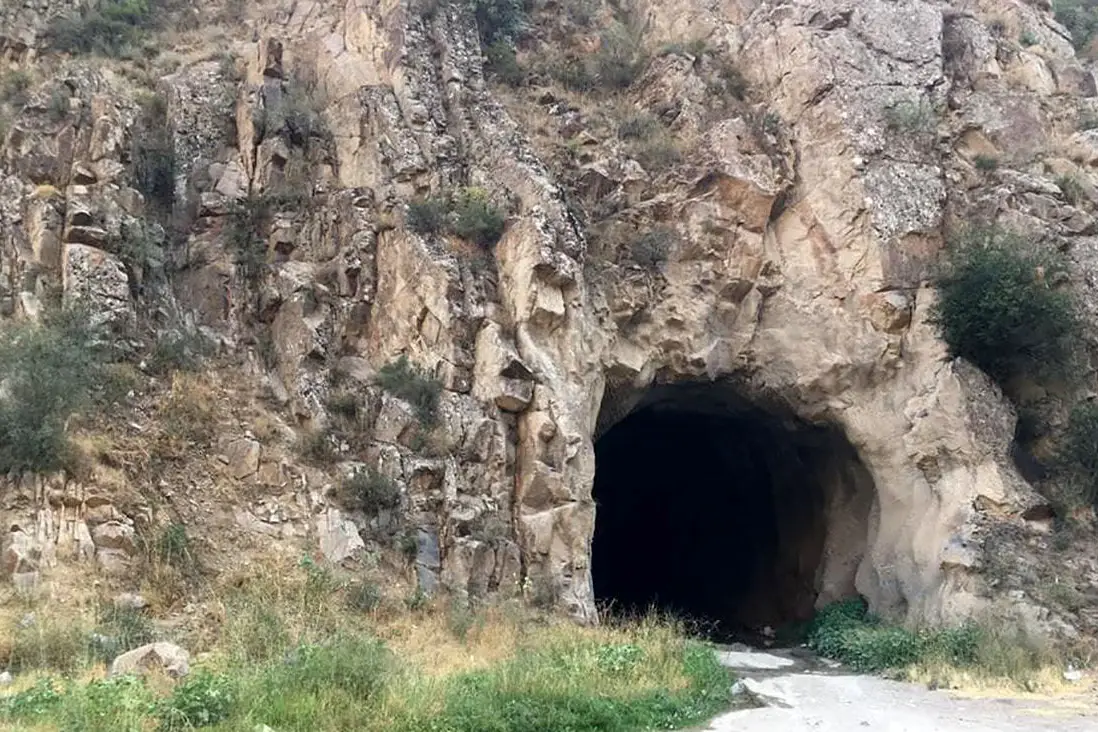
Discover the Wonders of Tabriz with Visit Our Iran!
Tabriz is a captivating destination with historical landmarks, natural wonders, and cultural treasures waiting to be explored. From the grandeur of the Jameh Mosque to the tranquil beauty of Liqvan Village, each attraction offers a unique glimpse into the rich tapestry of Tabriz’s heritage. Whether you’re drawn to the ancient allure of Kandovan Village or the spiritual ambiance of Saint Sarkis Church, Tabriz promises an unforgettable journey filled with awe-inspiring sights and immersive experiences.
So, pack your bags and plan an adventure to Tabriz, where the past intertwines seamlessly with the present, offering travelers a glimpse into Iran’s vibrant soul. Don’t forget to contact us to learn about our comprehensive Tabriz tour packages. We provide all services, from flights and accommodations to SIM cards and debit cards, ensuring a hassle-free and memorable journey.

